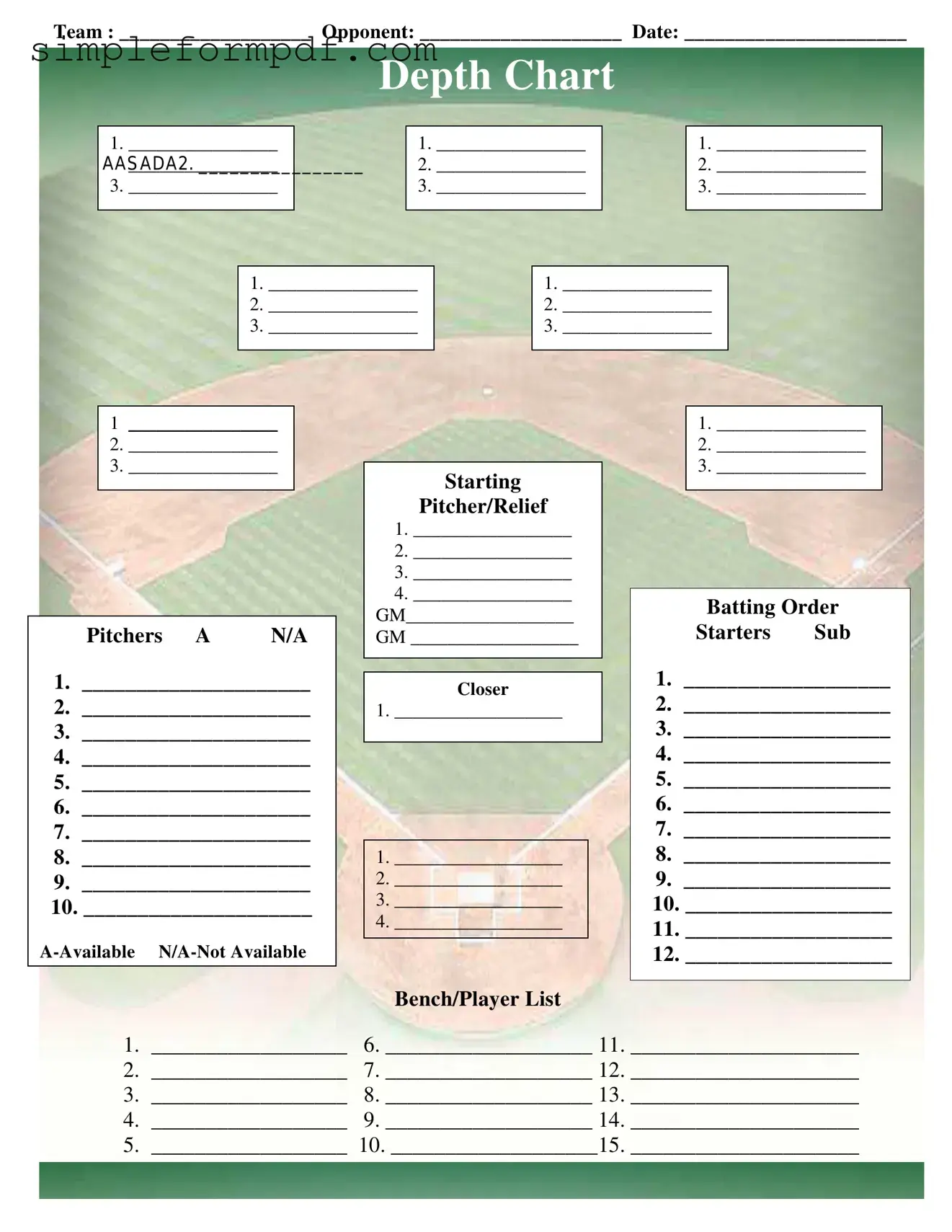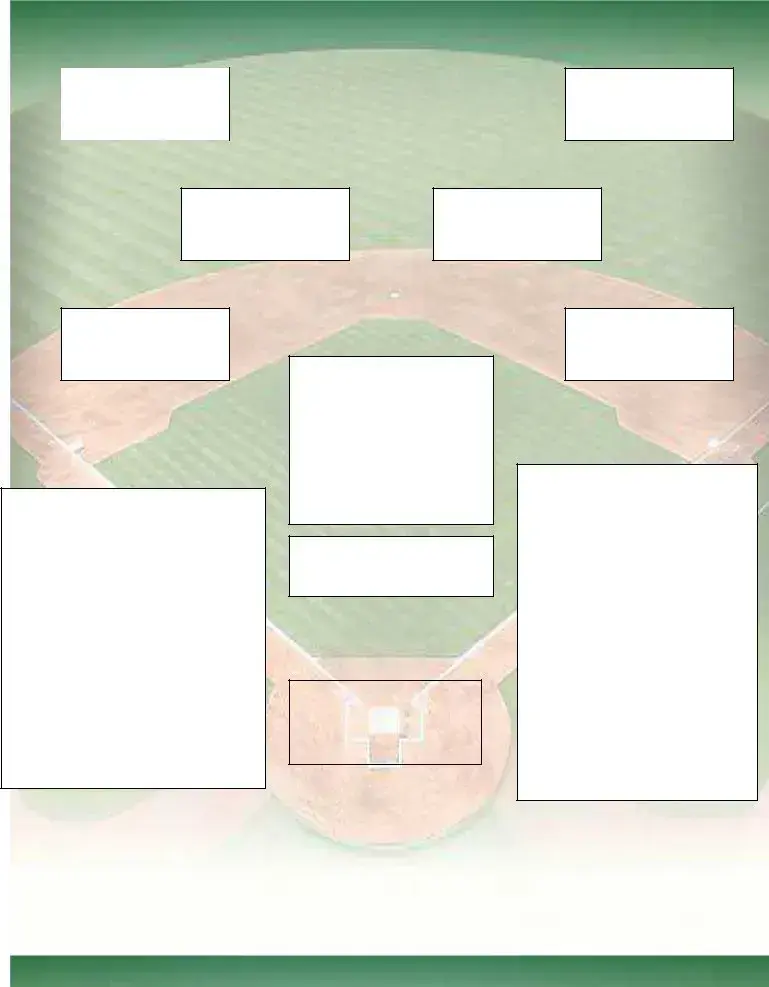Baseball Field Lineup PDF Form
The Baseball Field Lineup form is a vital tool for organizing team members and strategizing for upcoming games. It captures essential details such as team names, dates, and player positions, ensuring everyone is prepared for the match. To streamline your game day preparations, fill out the form by clicking the button below.
Launch Editor

